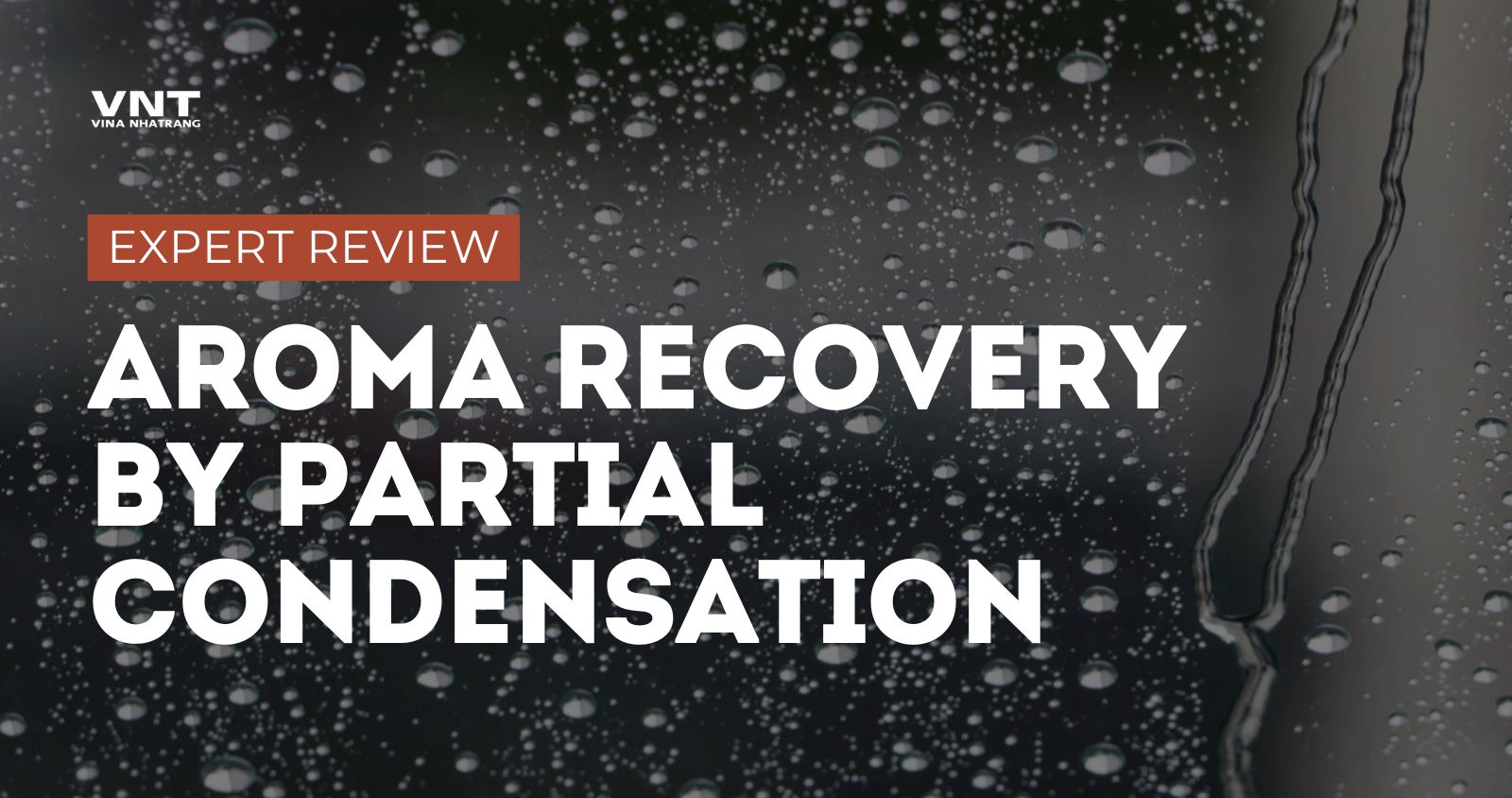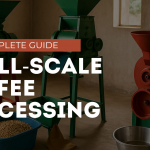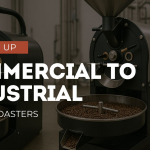Aroma is essential to the flavor and quality of food and beverages, yet volatile compounds are often lost during processing due to evaporation, heat, and oxidation. Partial condensation offers a precise solution by selectively recovering key aroma compounds while letting unwanted volatiles remain in the gas phase. This ensures authentic flavor retention without dilution or degradation.
By controlling temperature and pressure, partial condensation minimizes heat damage, making it ideal for fruit juices, coffee, wine, dairy, and essential oils. This article explores how the technique works, its industrial applications, and its role in the future of aroma recovery innovation.
Understanding Partial Condensation in Aroma Recovery
What is Partial Condensation?
Partial condensation is a process in which only a portion of the vapors from an evaporating liquid are condensed, allowing selective separation of volatile aroma compounds from water and other components.
By adjusting temperature and pressure, it is possible to concentrate desirable volatiles while allowing unwanted components to remain in the gas phase. This ensures that the final product retains its natural aroma balance, enhancing both quality and consumer appeal.
The Science Behind Partial Condensation
Partial condensation relies on the fundamental principles of vapor-liquid equilibrium (VLE):
- As a vapor mixture cools, different compounds condense at different temperatures based on their boiling points and volatility.
- More volatile aroma compounds remain in the vapor phase longer, while less volatile but desirable compounds condense first.
- This selective condensation allows manufacturers to capture the richest aromatic fractions, preventing unwanted dilution or loss.
How it Differs from Full Condensation & Distillation
| Factor | Partial Condensation | Full Condensation | Distillation |
|---|---|---|---|
| Condensation Extent | Selective, controlled | Complete phase change | Repeated vapor-liquid cycles |
| Aroma Recovery | Retains key volatiles | Can dilute aromas | Can alter aroma balance |
| Energy Efficiency | Lower energy use | Moderate | Higher due to multiple cycles |
| Thermal Impact | Minimal | Can degrade heat-sensitive compounds | Higher temperature exposure |
Industrial Applications of Partial Condensation in Aroma Recovery
1. Fruit Juice & Beverage Processing
During juice concentration, aroma compounds can be lost due to evaporation and thermal processing. Partial condensation helps recover these delicate volatiles, ensuring authentic taste and fragrance.
✅ Example: In strawberry juice concentration, partial condensation prevents the loss of delicate esters and alcohols, preserving the fruit’s natural aroma.
2. Coffee & Tea Production
Instant coffee and tea often lose their natural volatiles during freeze-drying or spray drying. Partial condensation captures these aromas from evaporated vapors, allowing them to be reintroduced before packaging.
✅ Example: Plate condensation systems are used in coffee production to selectively recover key aroma volatiles while avoiding unwanted oxidation.
3. Alcoholic Beverages & Wine Industry
Low-alcohol wines and spirits require careful aroma management. Partial condensation prevents the loss of essential volatiles during alcohol removal, ensuring the beverage retains its signature flavor profile.
✅ Example: In fractional de-alcoholization, partial condensation is used to remove ethanol while preserving fruity and floral notes.
4. Dairy & Fermented Products
Fermented dairy products, such as cheese and yogurt, develop complex aromas due to microbial activity. During heat treatment, partial condensation recovers these volatiles, maintaining the original sensory balance.
✅ Example: In whey protein concentrate production, partial condensation helps retain the natural buttery and nutty aromas often lost during heat processing.
5. Essential Oils & Perfume Industry
Essential oils are highly volatile and sensitive to temperature changes. Partial condensation allows selective recovery of specific fragrance compounds, improving purity and scent strength.
✅ Example: Rose oil extraction benefits from partial condensation to separate delicate floral esters from heavier, less desirable fractions.
Key Technologies in Partial Condensation for Aroma Recovery
Partial condensation is a highly effective technique for aroma recovery, but its success depends on the precision of temperature control, pressure regulation, and condensation efficiency. Several advanced technologies have been developed to optimize aroma capture while minimizing losses.
1. Multi-Stage Plate Condensation
Best for: Separating multiple aroma fractions with different volatilities.
Multi-stage plate condensation is a stepwise cooling process where vapors pass through multiple condensation plates, each set to a specific temperature. This allows for the sequential capture of different aroma compounds, ensuring that highly volatile and less volatile aromas are recovered separately.
How It Works:
- The vapor mixture enters the first condensation stage, where heavier and less volatile compounds condense first.
- The remaining vapors continue to the next plate, which is at a lower temperature, condensing more volatile compounds.
- This process continues across multiple stages until the desired fractionation is achieved.
- The collected aroma fractions can then be blended back into the product in controlled amounts.
✅ Used in: Coffee processing, fruit juice concentration, and herbal extracts.
✅ Advantages:
- Selective recovery of different aroma groups.
- Minimizes oxidation by condensing volatile compounds quickly.
- Ideal for applications where aroma balance and purity are critical.
❌ Limitations:
- Requires precise temperature control at each stage.
- Can be expensive due to its multi-stage setup.
2. Cryogenic Condensation
Best for: Capturing ultra-volatile aromas while preventing heat degradation.
Cryogenic condensation uses extremely low temperatures (often below -100°C) to selectively condense even the most volatile aroma compounds. This method is particularly useful for preserving delicate floral, fruity, or herbal notes that would otherwise be lost.
How It Works:
- Vapors are directed into a cooling chamber containing a cryogenic coolant (such as liquid nitrogen or CO₂).
- The extreme cold causes immediate condensation of aroma volatiles.
- The condensed aroma fractions are collected as a high-purity liquid for reintegration into the final product.
✅ Used in: High-end perfume production, premium fruit juices, and essential oils.
✅ Advantages:
- Prevents thermal degradation of delicate aromas.
- Allows for ultra-high purity recovery of volatile compounds.
- Highly efficient, capturing even trace amounts of aroma.
❌ Limitations:
- Requires specialized cryogenic equipment.
- High energy consumption due to extreme cooling requirements.
3. Hybrid Partial Condensation & Gas Stripping
Best for: Enhancing aroma selectivity while preventing oxidation.
Hybrid systems combine partial condensation with gas stripping, where an inert gas (e.g., nitrogen or CO₂) is injected into the vapor stream before condensation. This improves selective condensation while reducing the risk of oxidation.
How It Works:
- An inert gas is injected into the vapor stream, carrying aromas away from oxygen exposure.
- The vapor-gas mixture enters a partial condenser, where controlled cooling allows selective aroma recovery.
- The remaining gas and uncondensed vapors are either discarded or further processed in an additional separation step.
✅ Used in: De-alcoholized beer, fermented dairy processing, and sensitive herbal extracts.
✅ Advantages:
- Prevents oxidation, preserving aroma integrity.
- Enhances control over aroma fractionation.
- Can be integrated into existing evaporation or fermentation processes.
❌ Limitations:
- Requires additional gas supply, increasing operational complexity.
- May need secondary treatment for uncondensed vapors.
4. Spiral Tube Partial Condensation Systems
Best for: Compact, energy-efficient aroma recovery in continuous production lines.
Spiral tube condensers use a compact, coiled design to maximize heat exchange efficiency while gradually lowering vapor temperature. This method is ideal for continuous food and beverage production, where space and energy savings are key concerns.
How It Works:
- Vapors pass through a spiral coil housed inside a cooling chamber.
- As vapors move through the coil, temperature gradually decreases, allowing selective condensation at different points along the tube.
- The system can be adjusted to optimize temperature profiles for different aroma fractions.
✅ Used in: Dairy processing, juice production, and alcohol refinement.
✅ Advantages:
- Compact design, ideal for continuous production.
- Lower energy consumption compared to multi-stage condensation.
- Customizable temperature zones for selective aroma capture.
❌ Limitations:
- Not as precise as plate condensation for separating multiple aroma groups.
- Limited scalability for large industrial applications.
5. Two-Stage Water-Cooled Condensation
Best for: Cost-effective aroma recovery in large-scale beverage production.
Water-cooled condensation is one of the most widely used techniques for recovering aroma compounds from food and beverage processing. The two-stage approach enhances efficiency by using progressively lower cooling temperatures to recover a wider range of aroma compounds.
How It Works:
- Stage 1: Warm vapors pass through a primary condenser, where heavier aroma compounds condense first.
- Stage 2: The remaining vapors enter a secondary condenser, which operates at a lower temperature, capturing lighter volatiles.
- The separated aroma fractions can be blended as needed to restore the natural product balance.
✅ Used in: Large-scale fruit juice concentration, beer brewing, and dairy processing.
✅ Advantages:
- Lower operating costs than cryogenic methods.
- Suitable for high-volume processing.
- Easy to integrate into existing production lines.
❌ Limitations:
- Less selective than multi-stage or cryogenic condensation.
- Water usage may be high in certain applications.
Choosing the Right Partial Condensation Technology
Selecting the best partial condensation system depends on industry requirements, aroma volatility, and process constraints. Here’s a quick comparison:
| Technology | Best For | Main Advantage | Key Limitation |
|---|---|---|---|
| Multi-Stage Plate Condensation | Coffee, juice, herbal extracts | High selectivity | Requires complex temperature control |
| Cryogenic Condensation | Perfumes, essential oils, high-end juices | Ultra-pure aroma recovery | High energy use |
| Hybrid Condensation & Gas Stripping | Fermented dairy, de-alcoholized beverages | Prevents oxidation | Requires inert gas supply |
| Spiral Tube Condensation | Dairy, alcohol, juice processing | Energy-efficient & compact | Less precise fractionation |
| Two-Stage Water-Cooled Condensation | Large-scale juice & beer production | Cost-effective & easy integration | High water consumption |
➡️ Next reading: Aroma Recovery by Gas Injection Techniques
Conclusion
Advancements in partial condensation technology have transformed aroma recovery, allowing for selective, energy-efficient, and precise aroma capture across various industries. Whether using multi-stage fractionation, cryogenic cooling, or hybrid gas stripping, manufacturers can now retain delicate volatiles that would otherwise be lost, ensuring superior flavor preservation and product quality.
As the food and beverage industry moves toward sustainability and efficiency, expect to see greater automation, AI-driven temperature controls, and integrated hybrid recovery systems revolutionizing aroma retention. Investing in the right partial condensation technology ensures manufacturers can consistently deliver high-quality, aroma-rich products that meet consumer expectations.
References: Information sourced from Karlsson & Trägårdh (1997) on aroma recovery during beverage processing.




